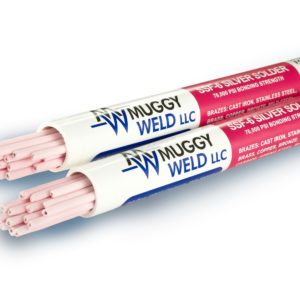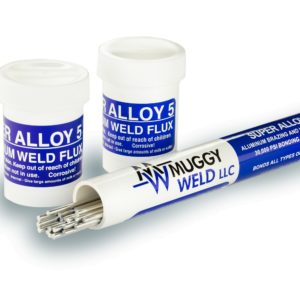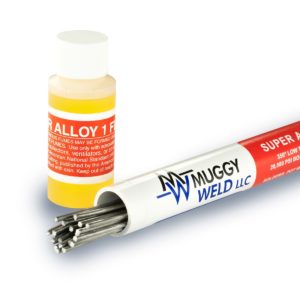Broken cast iron welding repairs are quickly resolved with Muggy Weld 77 cast iron electrode. For this video, a wrought iron fireplace stand with a broken-off leg was in need of welding, so we wire wheeled the paint off and used 77 electrode with a 130 amp mini welder to make the repair.
What is wrought iron?
Wrought iron (“worked iron”) is a low carbon iron alloy similar to cast iron. Historically, wrought iron was hammered or pounded while hot to shape and fabricate the metal into weaponry, decorative fixtures, gates, and more. As the science of metallurgy progressed, steel replaced most wrought iron–although it is still utilized in many industries. Tough, corrosion resistant, and malleable, wrought iron has been used for a number of applications:
- forging
- pipemaking
- bolts
- restoration of historical structures and tools
How does wrought iron differ from cast iron?
Cast iron is melted and poured into a cast, whereas, wrought iron is heated and manipulated with tools. Cast iron is more harder and more brittle than wrought iron–pounding the iron softens and strengthens the base metal.
Broken Cast Iron Welding Tips
Pre-cleaning the cast iron or wrought iron prior to welding is essential, to create a proper bond. Notice we completed an entire side before welding the next section. We removed the excess slag with a ball peen hammer between passes.
We used a small 130 amp buzzbox, however, any amp welder could be used with similar success.
TIPS:
- Clean the part thoroughly before welding
- For most cast iron welding the 77 would be the rod of choice, our 72 is for burnt or hard to weld cast irons
- Welders that use nickel: use the same process heating, peening etc. 77 will just give you the best results
- 77 can weld cast iron to mild steel
Disclaimers:
Please visit https://www.aws.org/Standards-and-Publications/Free-Resources/#YourResources prior to using Muggy Weld products, and adhere to all AWS welding safety guidelines.
Further product safety information is available at http://muggyweld.com/safety-guidelines
Muggy Weld LLC shall not be liable for any loss, injury, claim, liability, or damage of any kind resulting in any way from (a) your use of this Site, (b) any services or products obtained from this Site, (c) any errors in or omissions from this Site, (d) the unavailability or interruption of this Site or any features thereof, (e) any content contained on this Site.
MSDS sheets available with purchase from MuggyWeld.com, upon request.
Check Out These Products
-

SSF-6 Silver Solder Rod: Flux-Coated SSF-6 56% Brazing Rod
$69.00 – $260.00High-Strength, 56% Silver Solder Rod🌡 Melting Temperature 1150 / 621 ⇄︎ Bonding Strength 70000 psi, 482.63 MPa 🔧︎ Sizes Available (in) 1/16 🔧︎ Sizes Available (mm) 1.58 -

Super Alloy 5 Aluminum Welding and Brazing Rod
$69.00 – $109.00600°F aluminum welding, brazing, and soldering rod. Ideal for aluminum boat repair and cast aluminum.🌡 Melting Temperature 600 / 317 ⇄︎ Bonding Strength 30000 psi, 206.84 MPa

